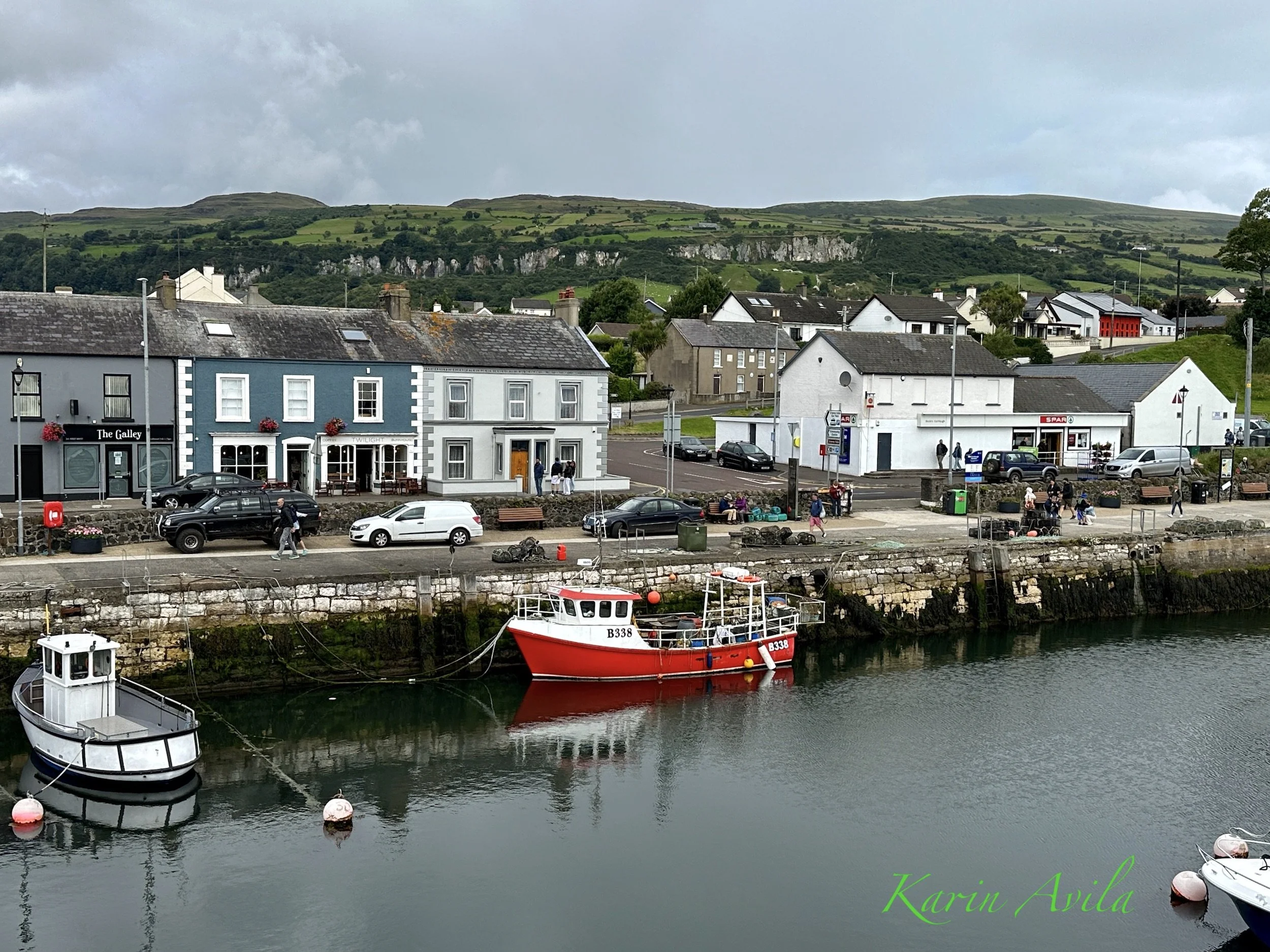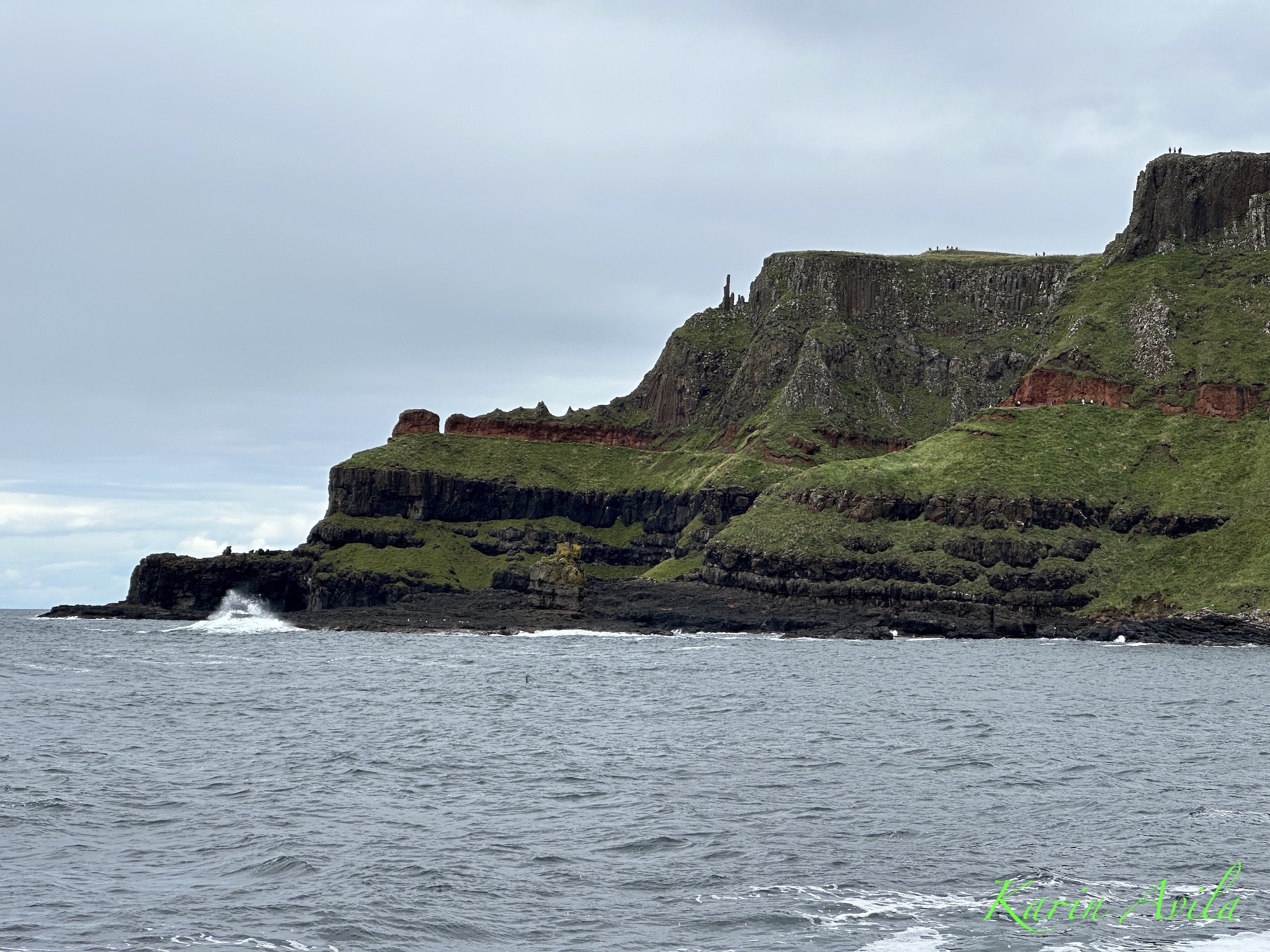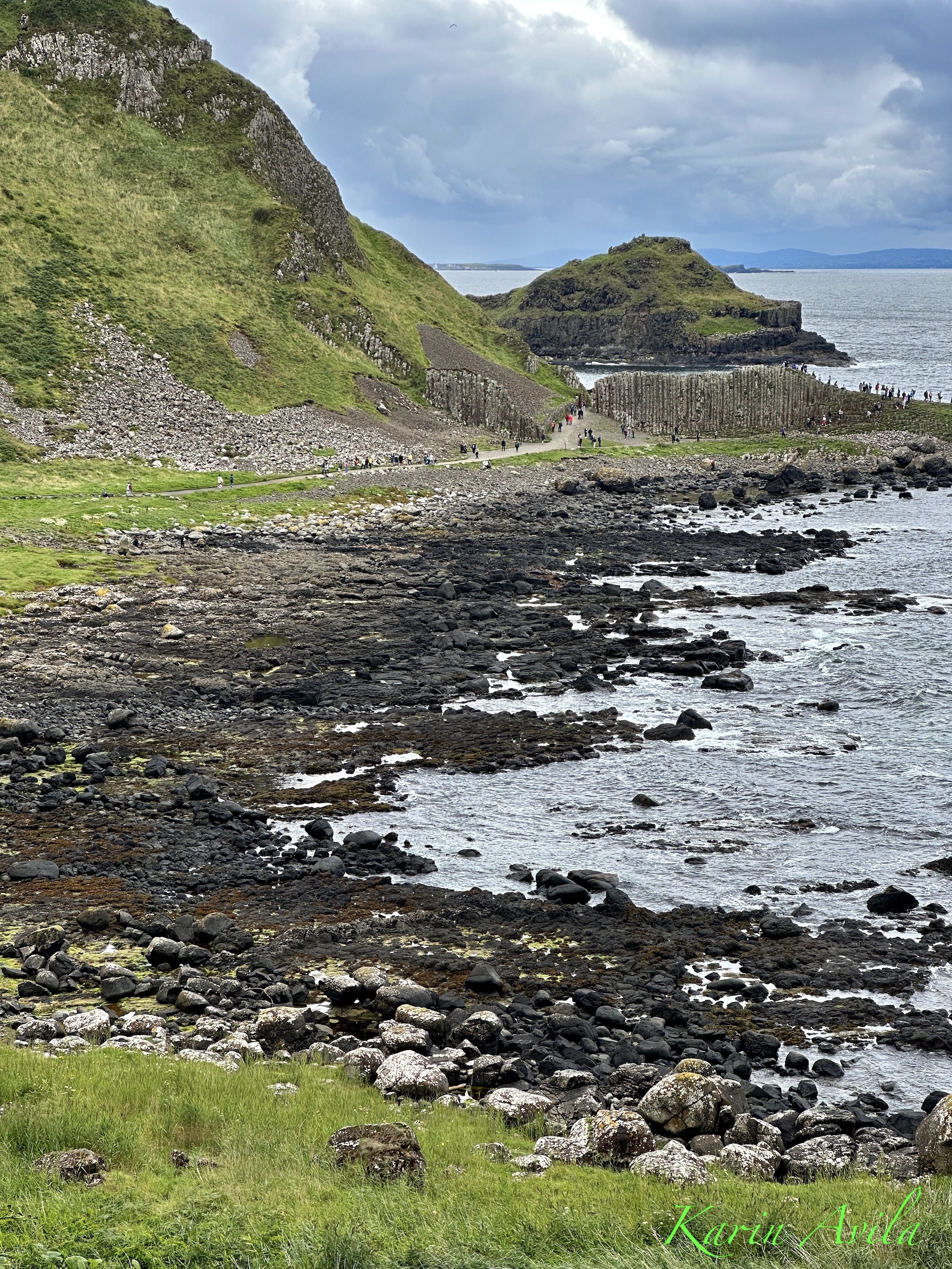Where Finn McCool Deceives
Causeway Coastal Route, Northern Ireland
Having a short time in Northern Ireland, I wanted to explore outside Belfast and take in some of the coastline. As we exited the city in a small tour bus, we passed “Napoleon’s Nose,” a nearby mountain with a prominent feature that inspired Jonathan Swift to write Gulliver’s Travels. As with this fictional novel, we seemed to be entering a land that could only be made up in dreams – pristine villages, rocky ruins, and a woman who lived in a cave for 50 years until the arms of death swept her up when she was 100 – all laid among pastures of glimmering greenery against a blue sky with suspended white and gray clouds, occasionally showering to moisten the planet.
Village of Carnlough in County Antrim along the Causeway Coastal Route
There are some things a camera can’t capture and some things words can’t adequately describe. Driving along the Causeway Coastal Route in Northern Ireland was a unique scenic experience. The main focal destination was Giant’s Causeway, another set of stomping grounds of legendary giant Finn McCool, and several points of interest were crossed along the way. The coastal land resembled an earthly torn flesh, with green meadows like skin fastened securely on top of dark, jagged cliffs that look like insides. The natural beauty was jarring at times, a test to the eyes that the earth could be so curiously shaped and colored, and with a history to match her dramatic appearance.
Northern Ireland coastline along Coastal Causeway Route
Carrick-a-Rede rope bridge connecting the large and small land masses
The coastline in Northern Ireland can be unforgiving, and if sunken ships could speak, La Girona, taken to her watery grave in 1588, would attest. La Girona, a warship and part of the mighty Spanish Armada, was scheduled to set sail to Scotland when a massive storm hit. She was thrust against the saw-like rocky shoreline, sinking with all of her passengers and riches. Of the 1,300 men onboard, only nine would survive, rivaling the Titanic in loss of life. Thousands of pieces of treasure were recovered centuries later, including a ruby-encrusted gold pendant, silver, pearls, and gold crosses bestowed upon the ships highest ranking offers.
Lacada Point located east of Giant’s Causeway where La Girona sank
Nearby and above the rocks where La Girona met her demise, Dunluce Castle is another reminder that everything we see will inevitably come to an end and disappear from human sight. Standing gracefully on a precipice overlooking the Atlantic Ocean, the medieval castle was first built in the 13th century. As a result of time, natural deterioration, and the shifting earth, the ruins are slowly collapsing into the sea in a kind of poetic grand finale.
Dunluce Castle located east of Giant’s Causeway
I had seen images of Giant’s Causeway and heard plenty about it. As with most places, it looks and feels different in person. Visiting during high season, it was full with tourists, which didn’t diminish the impressive setting as I thought it might. Following in the footsteps of Finn McCool’s shenanigans, legend has it the oddly-shaped geometric rocks were created when the Irish giant challenged his counterpart from Scotland, Benandonner, and built the causeway to create a path that would allow him to directly address the threat his nemesis made to Ireland. As it would happen, Finn McCool would deceive Benandonner and send him running back to Scotland, tearing away the causeway as he fled and leaving this other-worldly structure in his wake.
Giant’s Causeway tall basalt stones seen from a distant hiking trail
The drier and perhaps less entertaining story as to the creation of Giant’s Causeway is that the basalt rocks were formed 60 million years ago from lava cooling at the earth’s surface. The rocks formed a hexagonal shape based on the temperature at which the lava cooled. Although the scientific explanation doesn’t leave much for the imagination, high school geometry certainly would’ve been more interesting with real-world examples such as this one. Bouncing between fantasy and reality, the journey along the coastline was rounded off with a visit to the Bushmills Distillery, a perfect ending to a rich day.
Tourists at Giant’s Causeway with distinct hexagonal rock formations






